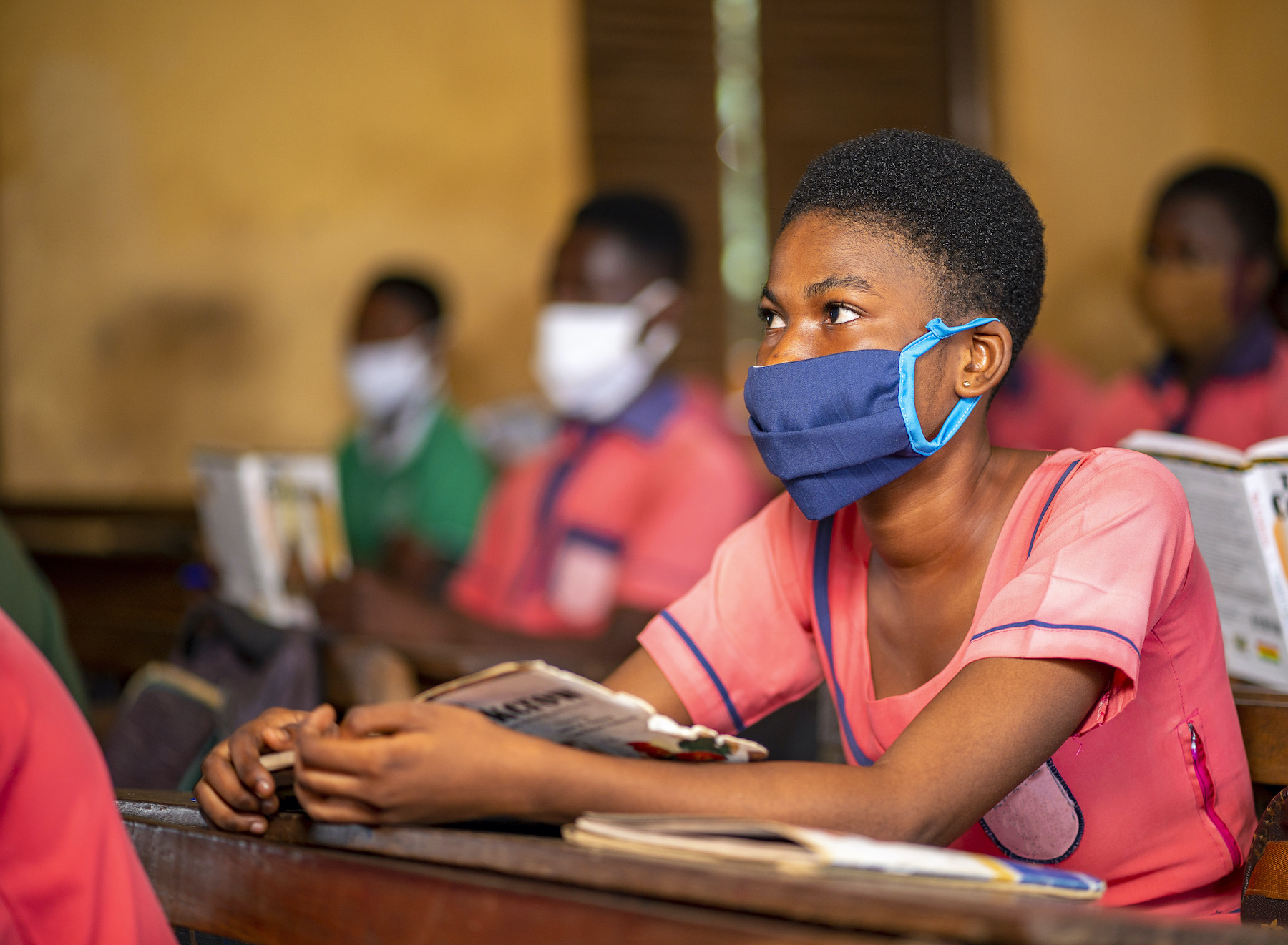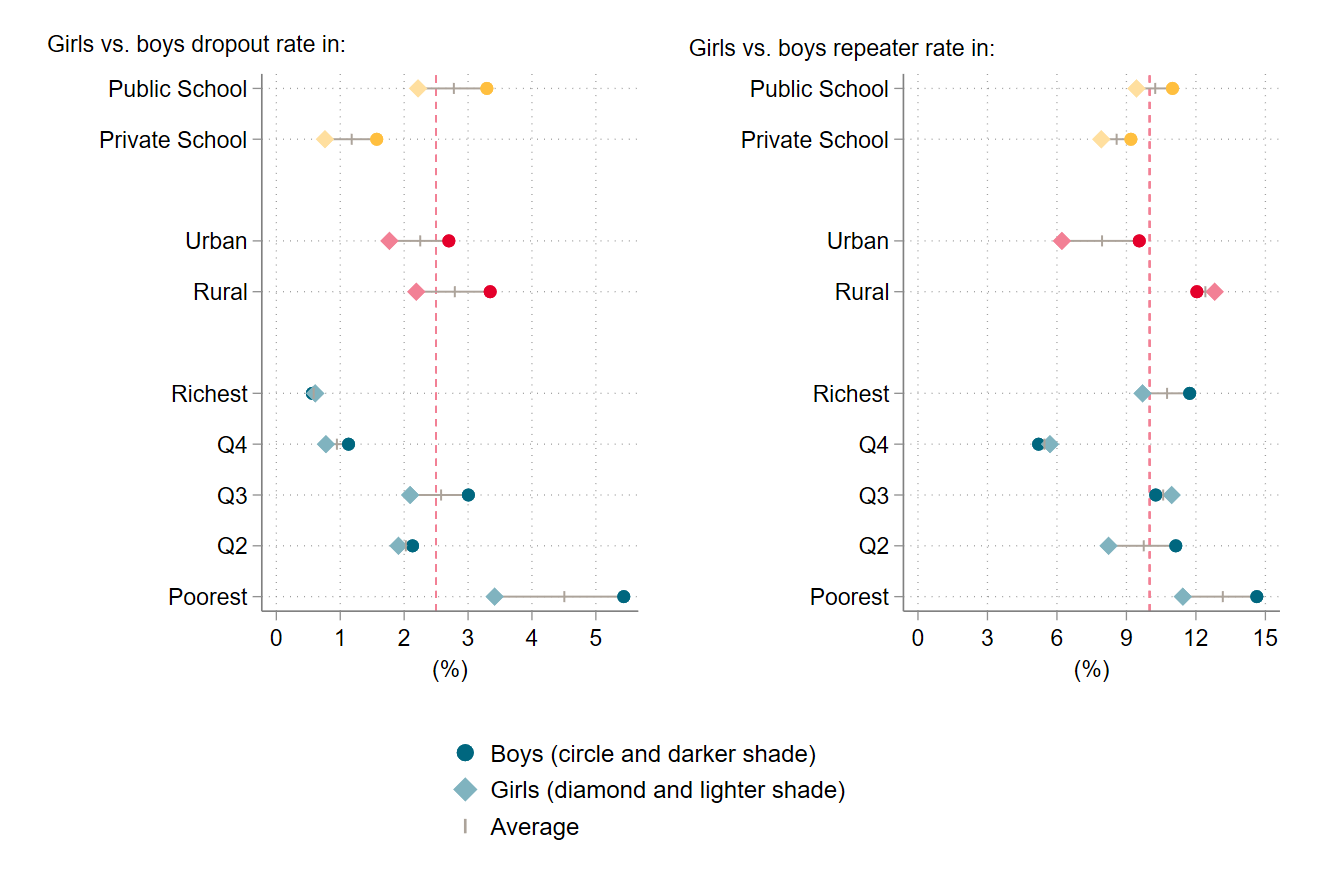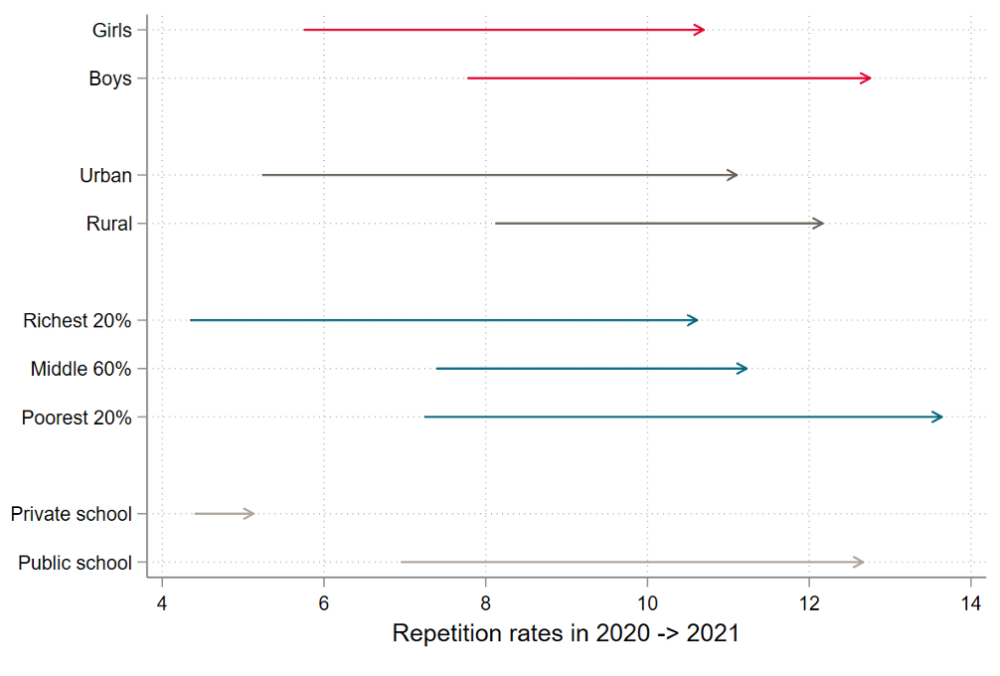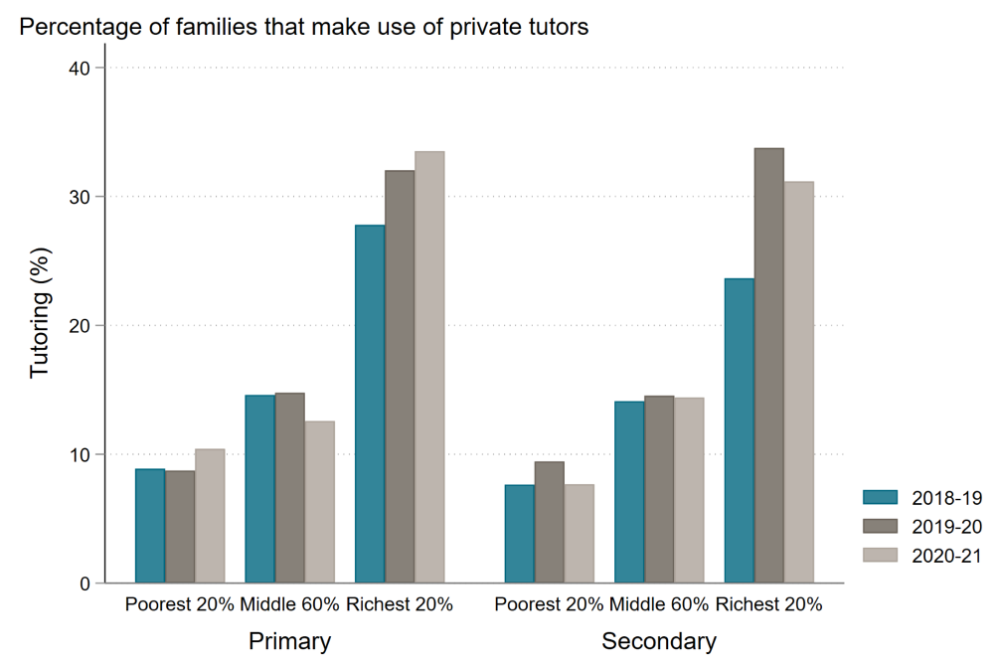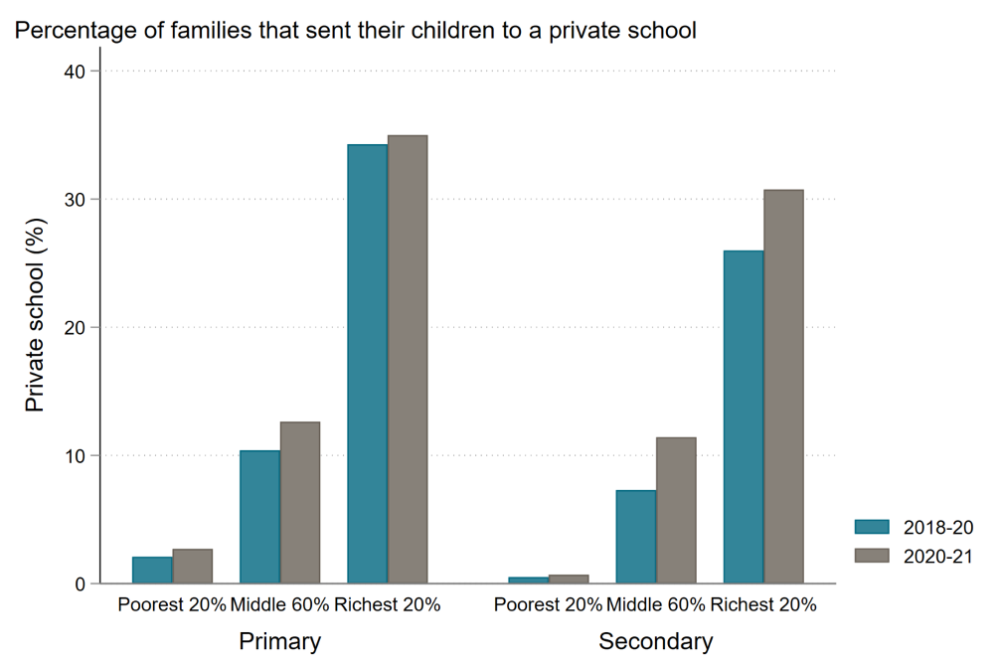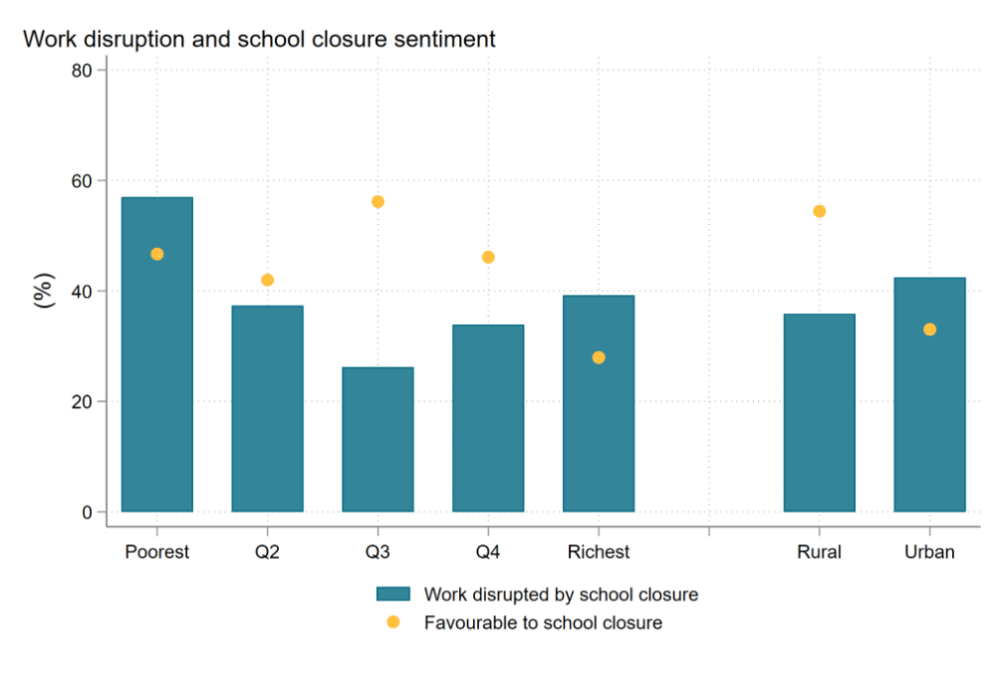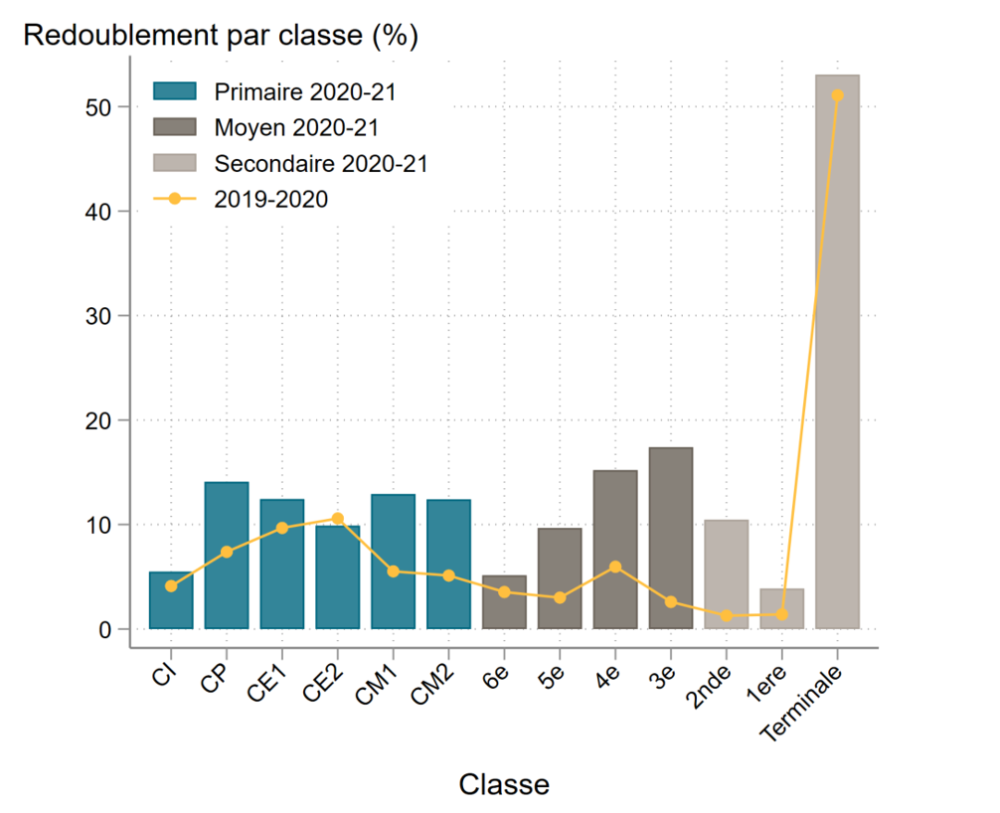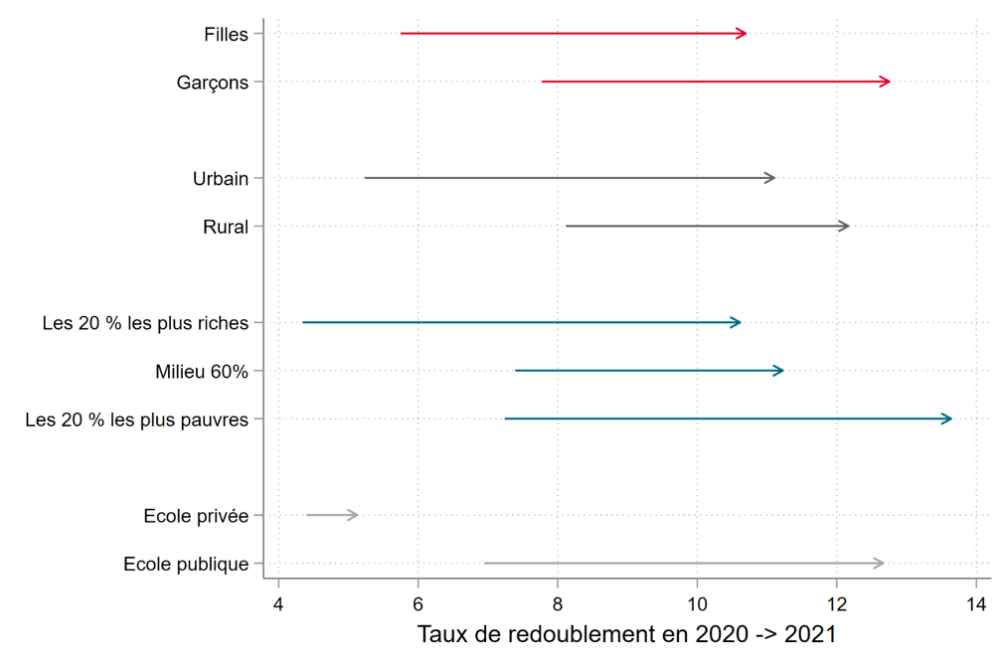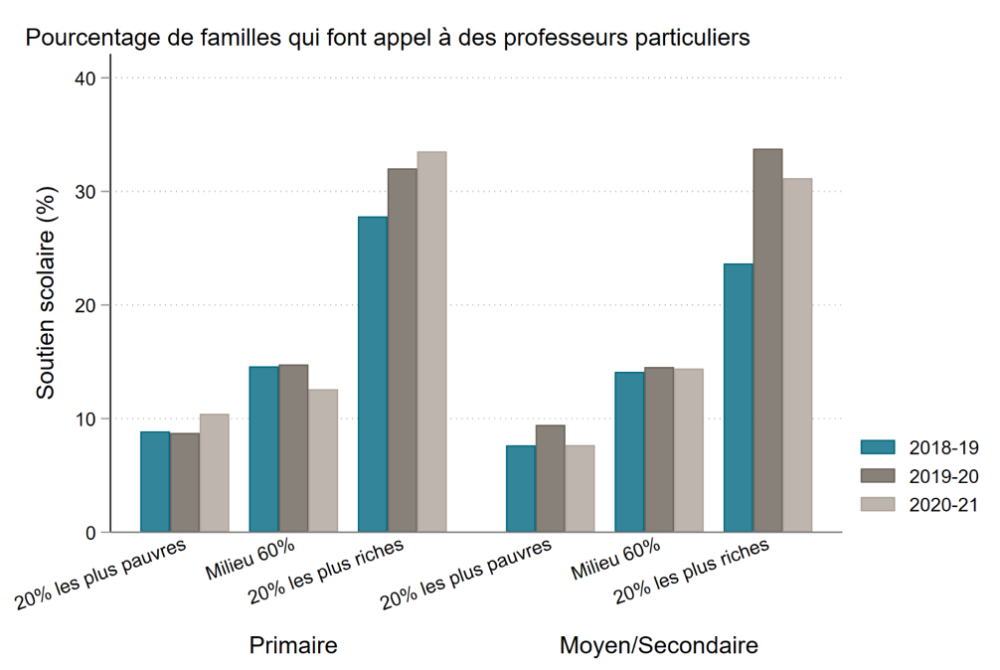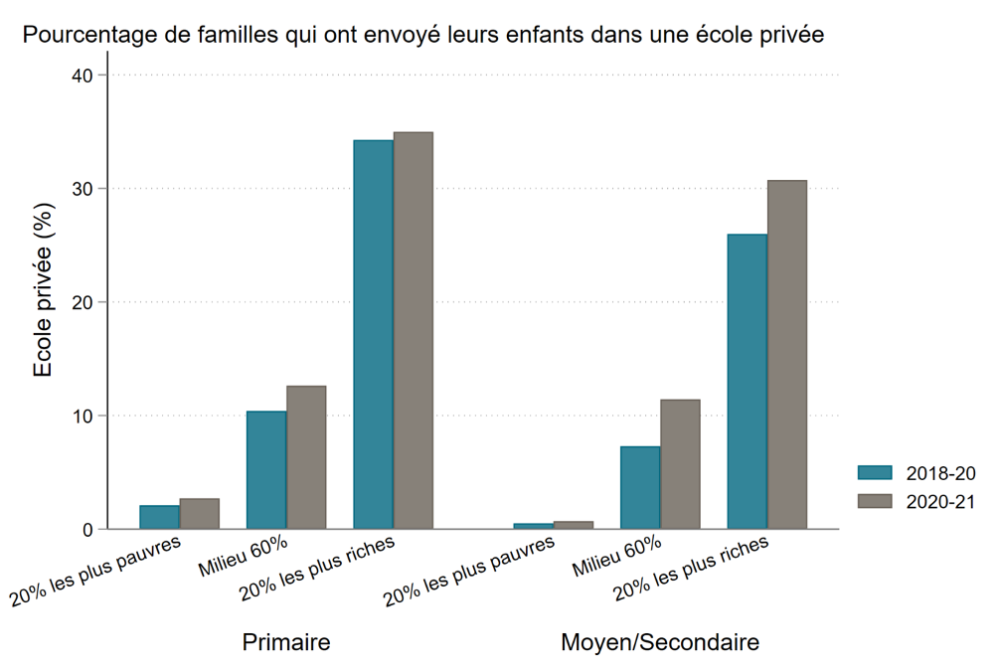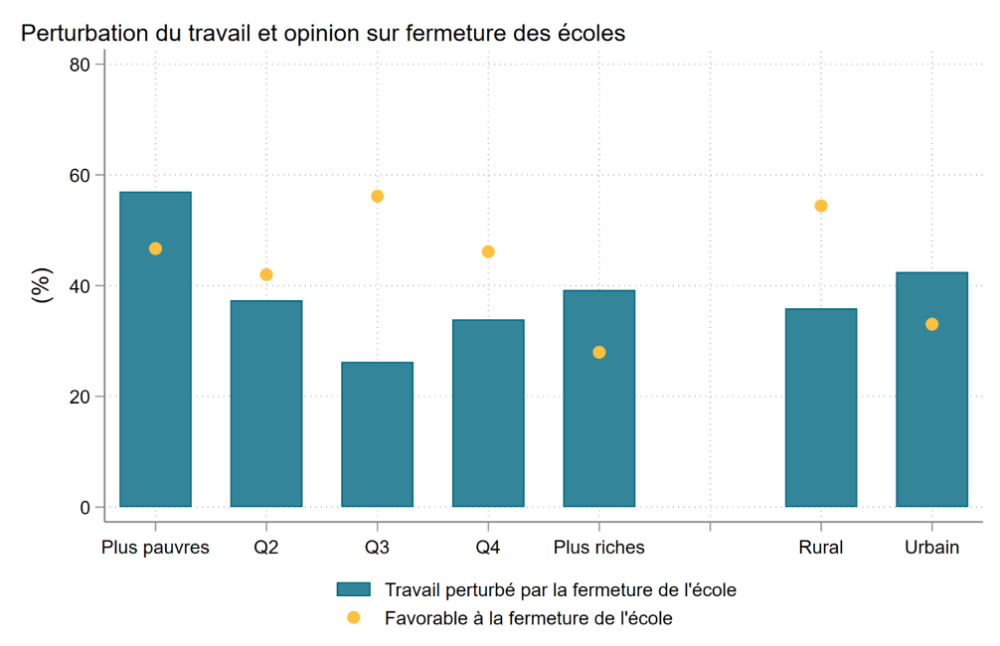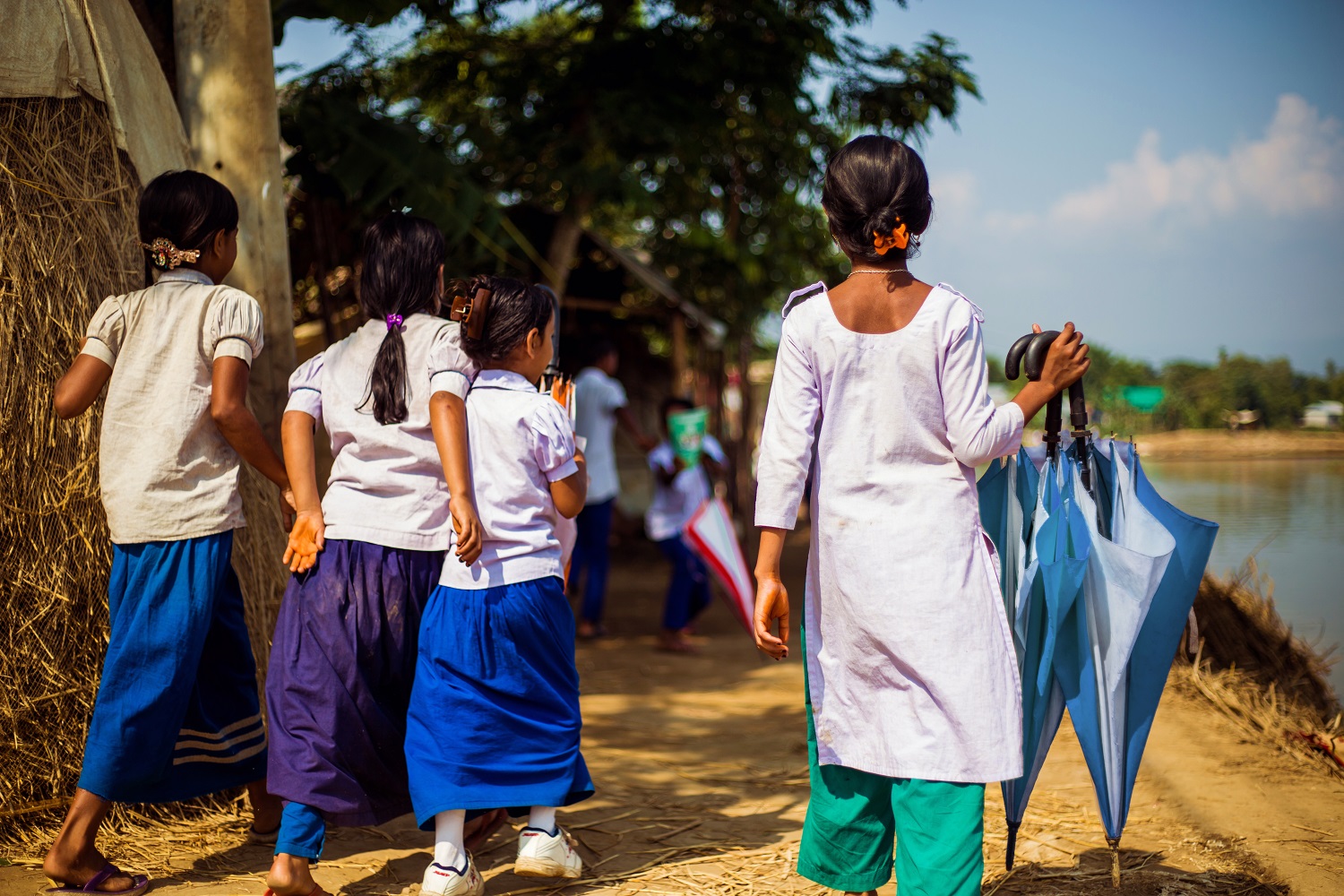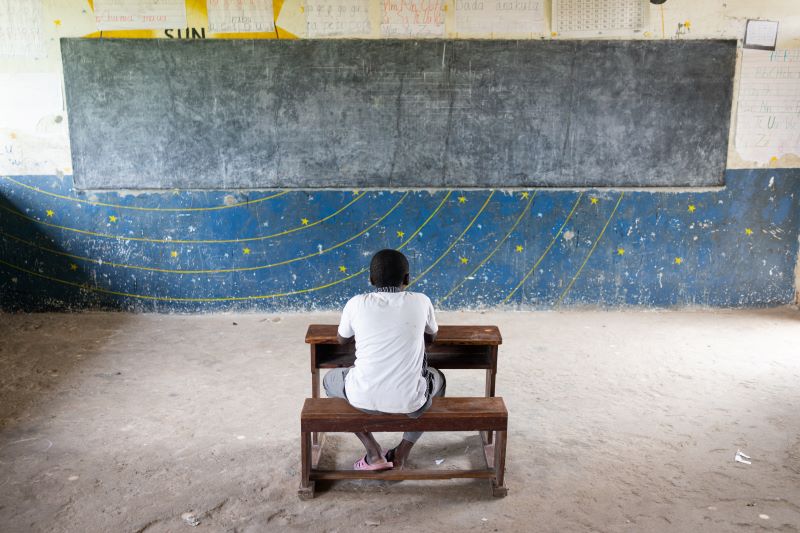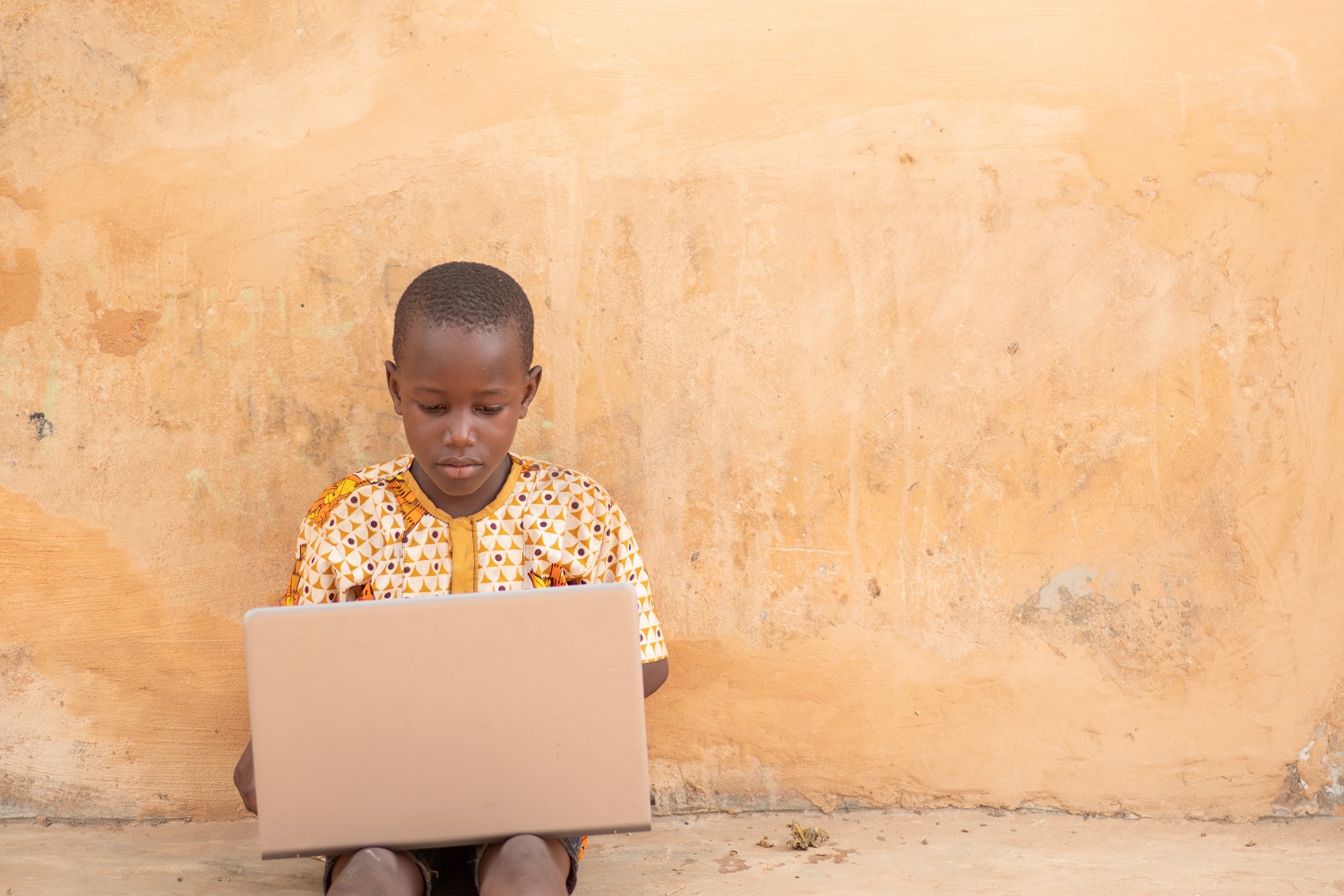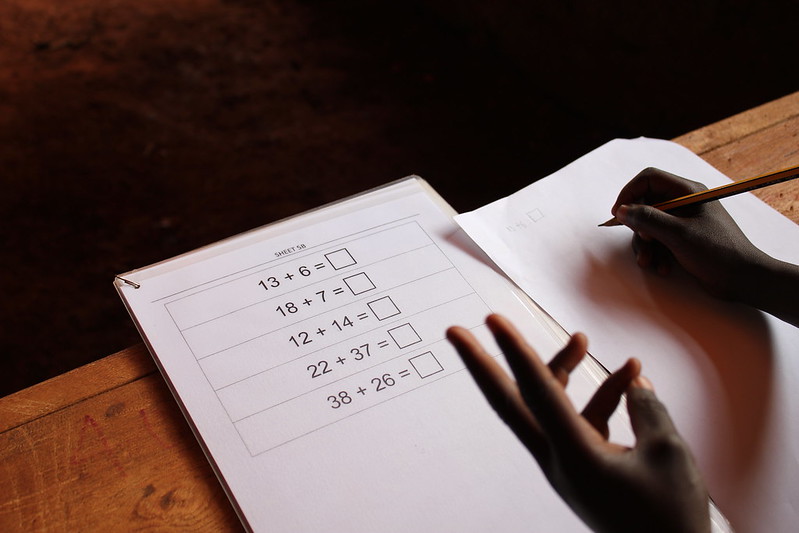Recommended
This blog is part of a series from PREPARE: a consortium of research organisations from Ghana (IEPA), Kenya (APHRC), Malawi (CERT), Senegal (CRDES), and Pakistan (tbd), all focused on the educational challenges posed by COVID-19.
Senegal was one of the first African countries to register a COVID-19 case, on the 2nd of March 2020. The country has now had more than 40,000 cases and 1,164 deaths. To contain the epidemic, the government decided, among other responses, to close all schools beginning on the 16th of March 2020. Schools reopened for students in exam grades (grades 6, 10, and 13) only at the end of June and, following the summer holidays, for all students in November 2020 (the school year usually runs from October to July). Thus, most Senegalese students were out of school for about eight months. A previous phone survey in Senegal that we carried out found that students received little support to continue their education, with only 4.5 percent reporting contact with their teachers during closures.
In addition to the direct effects of school closures, COVID-19 threatens education in indirect ways as well. Senegal experienced almost no economic growth in 2020 (0.8 percent according to the April 2021 edition of the IMF’s World Economic Outlook Database) leading to a small contraction of GDP per capita. In April 2020, 87 percent of respondents to our survey reported a loss in income, and an increasing number of people reported reducing the size of their meals. The effects of the economic crisis might compound those of school closures and lead to a large number of children dropping out or repeating grades. In this blog, we discuss new findings on school reopening; most students have re-enrolled but repetition rates are surging and inequalities are rising.
There is little information about the impacts of school closures and the COVID-19 crisis on Senegalese students. The Centre for Global Development (CGD) in collaboration with the Centre de recherche pour le développement économique et social (CRDES) conducted a face-to-face survey at the national level to measure the adverse effects of the pandemic in schools and among students. The survey took place in May 2021 with 984 households and 182 schools surveyed throughout the country. This blog post summarizes some of the key findings of the household survey.
Most children are back to school...
Having been out of school for months, there was a risk that Senegalese students would not all return to school when they reopened. Our results show that most students re-enrolled and the dropout rate did not increase in Senegal compared to the previous, pre-pandemic year (1.6 percent of students dropped out after school closure vs. 1.9 percent at the end of 2018-19 academic year). The difference is not statistically significant across time and between subgroups (girls and boys, students in urban and rural areas, and students living in rich and poor households).
…but repetition has almost doubled
Although the dropout rate has remained stable, repetition rates have increased significantly in Senegal. The high repetition rate is concerning, first because it translates to a lack of learning, and second because it will increase the age range of students in the next cohort. Literature has shown that greater age dispersion in the classroom might be detrimental to learning, especially in classrooms where learning is already low.
At the beginning of the 2019-20 academic year, 6.3 percent of Senegalese students aged 6 to 18 were currently repeating a grade, but the repetition rate increased to 11.4 percent at the beginning of the 2020-21 academic year. This represents an 81 percent increase in the share of students who must repeat. This increase in repetition is particularly high at the end of primary school (grade 5 and 6) and the end of lower secondary (grade 9 and 10) (see figure 1).
Higher repetition rates at the end of primary and lower secondary does not seem to be due to a lower success rate on exams. In fact, success rates of the end of primary and lower secondary exams remained stable (85 percent in 2019 vs. 85.9 percent in 2020 for the end of primary exam and 82.3 percent in 2019 vs. 83.4 percent in 2020 for the end of secondary exam). Passing the leaving exam is not the only requirement to pass to the next level; students also need to have sufficiently good grades to pass to lower or upper secondary. The months of school closure seem to have prevented many students from transitioning to the next academic level despite being successful on the exam.
Note: Students in Grade 13 (“Terminale”) have to take a high-stake secondary leaving exam, the Baccalaureat. The success rate has been historically low in Senegal which explains the high repetition rate. In 2016, the success rate was only 37 percent. (National Agency of Statistics and Demography, 2019).
This increase in repetitions has been similar for girls and boys, students in urban and rural areas, and students living in rich and poor households. While the gap did not grow after the closures, the poorest students are still much more likely to repeat a grade, which increases education costs for families and may lead to dropouts. In private schools the number of repeaters has barely increased at the beginning of the 2020-21 academic year, suggesting that private schools better manage the impact of school closure on student achievement.
Tutoring and private education has become more common among the richest households
Parents are worried by the performance of their children in school this year. In our new survey, 44 percent of parents declared that their children’s academic performance is worse than usual this academic year, while only 25 percent say it is better. This fear has spurred an increase in tutoring among families that can afford it, reflected in an increase in the proportion of children who receive tutoring from 12.4 percent in 2018-19 to 13.7 percent in 2020-21. But, as we can see on figure 3, this increase has been concentrated among richest households, with households outside the richest 20 percent unable to increase their level of private support for their children’s education (the difference across wealth is statistically significant).
Similarly, we found that there has been an increase in the number of families sending their children to a private school in 2020-21 compared to the last two academic years. It rose from 13.9 percent to 15.3 percent at primary level and 10.7 percent to 13.9 percent at secondary level. This probably reflects the concern of families for the education of their children expressed in our survey. But the poorest households are still excluded from private education and very few of them are able to afford it. That suggests that the COVID-19 crisis may have increased education inequalities in Senegal by increasing the gap between richest and poorest children in access to private education or tutoring.
Almost 60 percent of the poorest households have been financially impacted by school closure
Similarly to what we found in March 2020, less than half of parents are in favour of future school closures in the event of increased infections (44 percent this time). Our survey results show that school closures are likely to have borne larger financial consequences for poorest households. Almost 60 percent of the latter said that a household member had to stop working because of school closure compared to 37 percent for the richest households.
Despite warnings from UNICEF that the country would not be ready to welcome children safely for the new academic school year, Senegal fully reopened schools in November 2020. Since then, school mitigation measures seem to have been well communicated to parents (96 percent) and school sanitary measures satisfaction has also increased in the past 10 months (87 percent in May 2021 vs 61 percent in July 2020).
In Senegal, the COVID crisis and school closures have not seemed to lead to increased school dropout, but they have prevented many children from progressing through the education system. The increase in repetition will be costly for the Ministry of Education and for students who will have to do an extra year of schooling. The crisis also seems to have exacerbated inequalities in education, with the richest students less likely to repeat and more likely to access private schools or private tutoring. There is a risk that it will lead to more long-term impacts, with poorest students struggling even more to progress and eventually dropping out. Children with multiple vulnerabilities, such as the poorest students or girls, are also at greater risks of falling behind.
The COVID crisis is not over yet and this is only the first academic year after the school closure. Although students have returned to school, parents’ concerns for their performance and the demand for private tutoring suggests that many children are falling behind. The government needs to support all students, including the poorest ones, to avoid academic failure that might lead to dropouts in the long-term.
Ce blog fait partie de la série PREPARE : un consortium d'organismes de recherche du Ghana (IEPA), du Kenya (APHRC), du Malawi (CERT), du Sénégal (CRDES) et du Pakistan (à confirmer), tous axés sur les défis éducatifs posés par COVID-19.
Le Sénégal a été l'un des premiers pays africains à enregistrer un cas de COVID-19 le 2 mars 2020. Le pays compte désormais plus de 40 000 cas et 1 164 décès. Pour contenir l'épidémie, le gouvernement a décidé, entre autres, de fermer toutes les écoles à partir du 16 mars 2020. Les écoles ont rouvert pour les élèves des classes d'examen (6e, 3e et années de Terminale) à la fin du mois de juin et, pour tous les élèves en novembre 2020, (l'année scolaire s'étend habituellement d'octobre à juillet). Ainsi, la plupart des élèves sénégalais ont été déscolarisés pendant environ huit mois. Une précédente enquête téléphonique que nous avons réalisée au Sénégal a révélé que les élèves recevaient peu de soutien pour poursuivre leur scolarité, seuls 4,5 % d'entre eux déclarant avoir été en contact avec leurs enseignants pendant les fermetures.
Outre les effets directs des fermetures d'écoles, la COVID-19 menace également l'éducation de manière indirecte. Le Sénégal n'a connu pratiquement aucune croissance économique en 2020 (0,8 % selon l'édition d'avril 2021 de la base de données des perspectives de l'économie mondiale du FMI), ce qui a entraîné une légère contraction du PIB par habitant. En avril 2020, 87 % des personnes interrogées dans le cadre de notre enquête ont signalé une perte de revenus et un nombre croissant de personnes ont déclaré avoir réduit la taille de leurs repas. Les effets de la crise économique pourraient s'ajouter à ceux des fermetures d'écoles et conduire à un grand nombre d'abandons ou de redoublements. Dans ce blog, nous discutons des nouveaux résultats concernant la réouverture des écoles ; la plupart des élèves se sont réinscrits, mais les taux de redoublement sont en forte hausse et les inégalités se creusent.
Il existe peu d'informations sur les impacts de la fermeture des écoles et de la crise du COVID-19 sur les élèves sénégalais. Le Centre for Global Development (CGD), en collaboration avec le Centre de recherche pour le développement économique et social (CRDES), a mené une enquête en face à face au niveau national pour mesurer les effets néfastes de la pandémie dans les écoles et chez les élèves. L'enquête a eu lieu en mai 2021 avec 984 ménages et 182 écoles interrogés dans tout le pays. Cet article résume certains des principaux résultats de l'enquête des ménages sénégalais.
La plupart des enfants ont repris l'école...
Ayant été privés d'école pendant des mois, il y avait un risque que les élèves sénégalais ne retournent pas tous à l'école lors de la réouverture. Nos résultats montrent que la plupart des élèves se sont réinscrits et que le taux d'abandon n'a pas augmenté au Sénégal par rapport à l'année précédente pré-pandémie (1,6 % des élèves ont abandonné après la fermeture des écoles contre 1,9 % à la fin de l'année scolaire 2018-19). La différence n'est pas statistiquement significative dans le temps et entre les sous-groupes (filles et garçons, élèves des zones urbaines et rurales, et élèves vivant dans des ménages riches et pauvres).
… mais le taux de redoublement a presque doublé
Bien que le taux d'abandon soit resté stable, le taux de redoublement a augmenté de manière significative au Sénégal. Un taux de redoublement élevé est préoccupant, d'abord parce qu'il traduit un manque d'apprentissage, et ensuite parce qu'il augmentera la tranche d'âge des élèves de la cohorte suivante. La littérature a montré qu'une plus grande dispersion des âges dans la classe pourrait nuire à l'apprentissage, en particulier dans les classes où l'apprentissage est déjà faible (Banque Mondiale, 2012 ; Lloyd, 2010).
Au début de l'année scolaire 2019-20, 6,3 pour cent des élèves sénégalais âgés de 6 à 18 ans redoublaient actuellement une classe, mais le taux de redoublement a augmenté à 11,4 pour cent au début de l'année scolaire 2020-21. Cela représente une augmentation de 81 pour cent des élèves qui doivent redoubler. Cette augmentation du redoublement est particulièrement élevée à la fin de l'école primaire (CM1 et CM2) et à la fin de l’enseignement moyen (4e et 3e) (voir figure 1).
Les taux de redoublement plus élevés à la fin du primaire et de l’enseignement moyen ne semblent pas être dus à un taux de réussite plus faible aux examens. En fait, les taux de réussite aux examens de fin de primaire et de l’enseignement moyen sont restés stables (85 pour cent en 2019 contre 85,9 pour cent en 2020 pour l'examen de fin de primaire et 82,3 pour cent en 2019 contre 83,4 pour cent en 2020 pour l'examen de fin d’enseignement moyen). La réussite de l'examen de fin d'études n'est pas la seule condition pour passer au niveau suivant ; les élèves doivent également avoir des notes suffisamment bonnes pour passer en enseignement moyen ou secondaire. Les mois de fermeture de l'école semblent avoir empêché de nombreux élèves de passer au niveau scolaire suivant malgré leur réussite à l'examen.
Note : Les élèves de Terminale doivent passer un examen de fin d'études secondaires, le Baccalauréat, qui déterminera la suite de leur progression académique et professionnelle. Le taux de réussite a été historiquement faible au Sénégal, ce qui explique le taux de redoublement élevé. En 2016, le taux de réussite n'était que de 37 %. (ANSD, 2019).
Cette augmentation des redoublements a été similaire pour les filles et les garçons, les élèves des zones urbaines et rurales, et les élèves vivant dans des ménages riches et pauvres. Si l'écart ne s'est pas creusé après les fermetures, les élèves les plus pauvres restent beaucoup plus susceptibles de redoubler une année, ce qui augmente les coûts de l'éducation pour les familles et peut conduire à des abandons. Dans les écoles privées, le nombre de redoublants a à peine augmenté à la rentrée 2020-21, ce qui suggère que les écoles privées gèrent mieux l'impact de la fermeture des écoles sur les résultats des élèves.
Le cours particuliers et l'enseignement privé sont devenus plus courants dans les ménages les plus riches
Les parents sont inquiets des résultats scolaires de leurs enfants cette année. Dans notre nouvelle enquête, 44 pour cent des parents déclarent que les résultats scolaires de leurs enfants sont moins bons que d'habitude cette année scolaire, tandis que 25 pour cent seulement disent qu'ils sont meilleurs. Cette crainte a suscité une augmentation du soutien scolaire parmi les familles qui peuvent se le permettre, ce qui se traduit par une augmentation de la proportion d'enfants qui bénéficient de cours particuliers (de 12,4 pour cent en 2018-19 à 13,7 pour cent en 2020-21). Cependant, comme nous pouvons le voir sur la figure 3, cette augmentation a été concentrée parmi les ménages les plus riches, les autres ménages ne pouvant pas augmenter leur niveau de soutien privé pour l'éducation de leurs enfants (la différence à travers les niveaux de richesse est statistiquement significative).
Nous avons également constaté une augmentation du nombre de familles envoyant leurs enfants dans une école privée en 2020-21 par rapport aux deux dernières années scolaires (de 13,9 % à 15,3 % au niveau primaire et de 10,7 % à 13,9 % au niveau secondaire). Ceci reflète probablement la préoccupation des familles pour l'éducation de leurs enfants exprimée dans notre enquête. Les ménages les plus pauvres sont toujours exclus de l'enseignement privé et très peu d'entre eux sont en mesure de le payer. Cela suggère que la crise du COVID-19 a pu accroître les inégalités éducatives au Sénégal en augmentant l'écart entre les enfants les plus riches et les plus pauvres dans l'accès à l'enseignement privé ou au soutien scolaire.
Près de 60 pour cent des ménages les plus pauvres ont été financièrement affectés par la fermeture d'une école.
Comme nous l'avions constaté en mars 2020, moins de la moitié des parents sont favorables à de futures fermetures d'écoles en cas d'augmentation des infections (44 pour cent cette fois). Les résultats de notre enquête montrent que les fermetures d'écoles ont probablement eu des conséquences financières plus importantes pour les ménages les plus pauvres. Près de 60 pour cent de ces derniers ont déclaré qu'un membre du ménage avait dû cesser de travailler en raison de la fermeture de l'école, contre 37 pour cent pour les ménages les plus riches.
Malgré les avertissements de l'UNICEF selon lesquels le pays ne serait pas prêt à accueillir les enfants en toute sécurité pour la nouvelle année scolaire, le Sénégal a entièrement rouvert ses écoles en novembre 2020. Les mesures d'atténuation de l'impact des écoles semblent avoir été bien communiquées aux parents (96 pour cent) et la satisfaction concernant les mesures sanitaires dans les écoles a également augmenté au cours des 10 derniers mois (87 pour cent en mai 2021 contre 61 pour cent en juillet 2020).
Au Sénégal, la crise du COVID et les fermetures d'écoles ne semblent pas avoir entraîné une augmentation de l'abandon scolaire, mais elles ont empêché de nombreux enfants de progresser dans le système éducatif. L'augmentation des redoublements sera coûteuse pour le ministère de l'éducation et pour les élèves qui devront faire une année de scolarité supplémentaire. La crise semble également avoir exacerbé les inégalités dans l'éducation, les élèves les plus riches étant moins susceptibles de redoubler et plus susceptibles d'accéder à des écoles privées ou à des cours particuliers. Il pourrait y avoir des répercussions à plus long terme, les élèves les plus pauvres ayant encore plus de mal à progresser et finissant par abandonner l'école. Les enfants présentant des vulnérabilités multiples, comme les élèves les plus pauvres ou les filles, sont également plus exposés au risque de décrochage scolaire.
La crise du COVID n'est pas encore terminée et nous n’avons observé que la première année scolaire suivant la fermeture de l'école. Bien que les élèves soient retournés à l'école, l'inquiétude des parents quant à leurs résultats et la demande de cours particuliers suggèrent que de nombreux enfants prennent du retard. Le gouvernement doit soutenir tous les élèves, y compris les plus pauvres, afin d'éviter l'échec scolaire qui pourrait conduire à des abandons à long terme.
Disclaimer
CGD blog posts reflect the views of the authors, drawing on prior research and experience in their areas of expertise. CGD is a nonpartisan, independent organization and does not take institutional positions.


